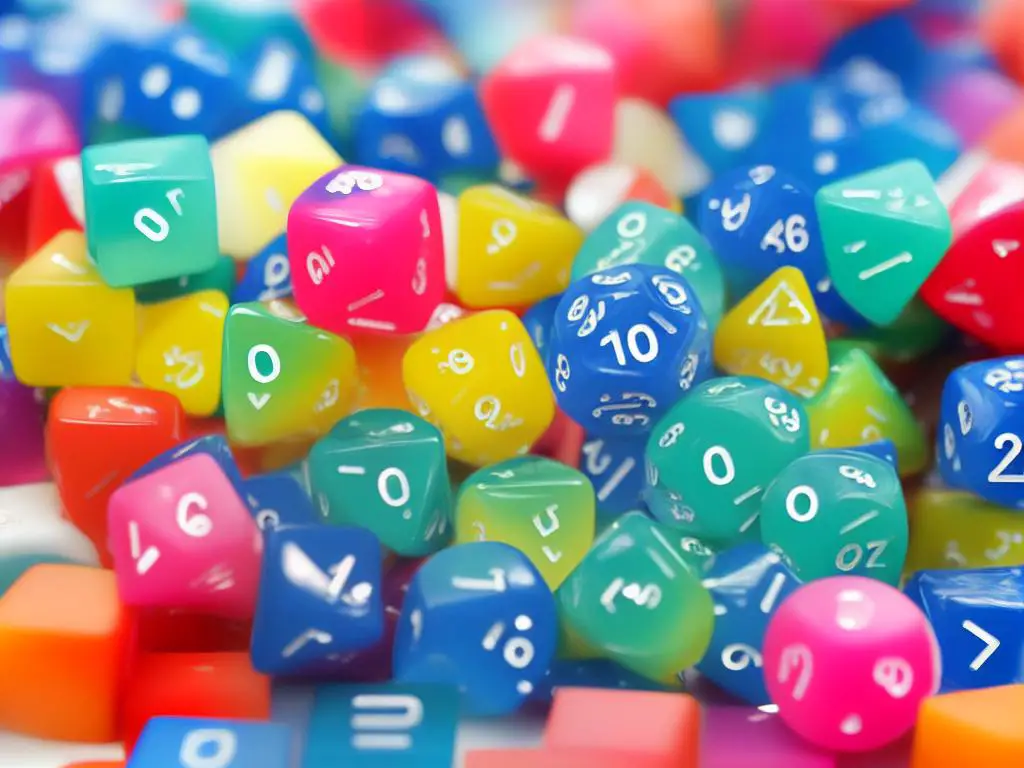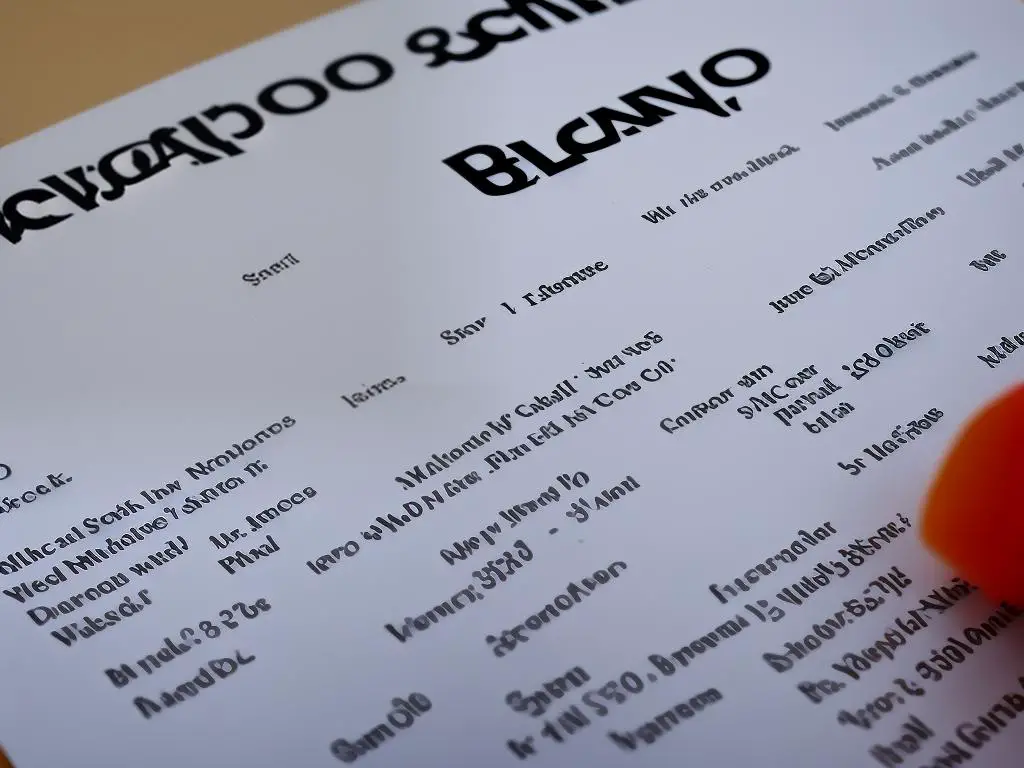Have you ever wondered about how the bunco score sheet worka, or how to create your own unique template that’s both functional and visually appealing? If so, you’ve come to the right place! In this essay, we will explore the ins and outs of bunco score sheets, discuss their components, and learn how to use them effectively during a game of bunco. Furthermore, we will delve into various design elements and customization options that will help you create a bunco score sheet template that suits your style and personality.
Understanding Bunco Score Sheets
Bunco is a fun and easy-to-learn dice game that can be enjoyed by people of all ages. One essential part of playing Bunco is understanding how to use Bunco score sheets. These sheets keep track of the progress and scores of each player throughout the game. In this guide, we will provide a clear explanation of the purpose of Bunco score sheets, the different elements included in the sheet, and how to fill them out during a Bunco game.
Purpose of Bunco Score Sheets
Bunco score sheets serve several important purposes. Some of the main reasons for using Bunco score sheets include:
- Keeping track of each player’s individual score
- Organizing and managing player rotations between rounds
- Ensuring that every player knows the current round number and target number
Using Bunco score sheets makes it easier for all players to follow along and understand the state of the game.
Elements of a Bunco Score Sheet
Although there may be some variations in the design of Bunco score sheets, most include the following elements:
- Player Name / Team Name: At the top of the score sheet, there is space to write the player’s name or the team name if playing in teams.
- Table Number: The score sheet features a designated space for the table number. In Bunco, players rotate tables between rounds, and this space makes it easy to keep track of the current table.
- Round Number: Each round in Bunco is played towards a specific target number, represented as round one for the number one, round two for the number two, and so on. The score sheet typically has a column for each round number.
- Wins, Losses, and Buncos: These columns are used to keep track of the number of games won, lost, and the number of Buncos (when a player rolls three-of-a-kind of the target number).
- Score Tally: This area of the score sheet is used to keep a running tally of each player’s score during a round.
Filling Out a Bunco Score Sheet
Using a Bunco score sheet during gameplay can greatly improve the organization and flow of the game. Follow these simple steps to fill out your Bunco score sheet:
- Write Player Name / Team Name: At the beginning of the game, each player should write their name or team name at the top of the score sheet.
- Table Number: Assign and note down the table number for each player or team on their score sheet, making sure that all players at the same table have the same table number.
- Round Number: As each round begins, players should mark off the current round number on their score sheet.
- Track Wins, Losses, and Buncos: During each game, be sure to note your wins, losses, and Buncos in the appropriate columns on the score sheet. A win is when your team scores more points than the other team at the table. A loss is when your team scores fewer points than the other team at the table.
- Score Tally: Keep a running tally of points during each game. In Bunco, a player scores one point for each die that matches the round number, and 21 points for achieving a Bunco.
- Rotation: After every completed round, follow the rotation rules of your specific Bunco group and update the table number accordingly on your score sheet.
By following these steps and understanding the purpose and elements of a Bunco score sheet, you can easily participate in and enjoy a game of Bunco. Happy playing!

Designing Your Bunco Score Sheet Template
Bunco is a fun and engaging dice game that is played in groups, typically of 12 people. The goal of the game is to roll the same number as the round you are currently playing (e.g., rolling a 3 during round 3). A bunco score sheet is essential for keeping track of individual players’ scores and progress.
Designing a bunco score sheet template can be an enjoyable process that allows you to add your personal touch to the game. In this tutorial, you will learn about various design elements, themes, and customization options for creating your unique bunco score sheet template.
Step 1: Choose a Layout
Before diving into design elements, decide on the layout of your bunco score sheet template. There are a few common layouts to choose from:
- Table format: Create a table with multiple columns and rows to track scores for each round and player.
- List format: List each player’s name with space to record scores for each round.
- Scorecard format: Design individual scorecards for each player with room to track round scores.
Consider factors such as available printing resources and ease of use when selecting a layout.
Step 2: Select a Theme
Once you have chosen a layout, think about a theme for your bunco score sheet template. Themes can be based on occasions (e.g., holidays, birthdays), seasons, or other personal interests. Your chosen theme will inform the design elements, colors, and fonts used in your template.
Step 3: Incorporate Graphics and Images
Graphics and images are an excellent way to add visual interest to your bunco score sheet template. You can find free graphics and images online through websites like Pixabay or Unsplash. Use graphic design software like Canva or Adobe Photoshop to add graphics and images to your template.
Consider adding a fun header with the game’s title or an entertaining graphic related to your theme. Additionally, you could add background graphics or images that complement your theme and color scheme.
Step 4: Customize Text
Customize the text on your bunco score sheet template with font styles and sizes that align with your theme and are legible for participants. Some design programs offer pre-made font combinations that you can use as a starting point.
Make sure to include spaces for players’ names, round numbers, and scoring categories:
- Buncos: The number of times a player rolls three of a kind with the same number as the current round.
- Wins: The number of times a player has the highest score at their table.
- Losses: The number of times a player has the lowest score at their table.
Step 5: Add Color
Color is an essential design element that can affect the overall aesthetic of your bunco score sheet template. Choose colors that align with your theme and create a visually cohesive look.
Some things to consider when working with color include:
- Color psychology: Different colors evoke different emotions. Consider how colors relate to your theme and the vibe you want to create.
- Readability: Ensure the colors you choose don’t hinder the readability of the text on your template.
- Contrast: Ensure there is enough contrast between your text and background for easy visibility.
Step 6: Customize for Accessibility
Keep accessibility in mind when designing your bunco score sheet template. Some players may have difficulty reading small print or certain color combinations. Opt for larger font sizes and high contrast color schemes to ensure all players can participate comfortably.
Conclusion
Designing a unique and visually appealing bunco score sheet template is a fun way to add a personal touch to your game nights. By considering layout, theme, graphics, text, color, and accessibility, you can create a template that is both functional and enjoyable for all players. Happy playing!

Throughout this journey, we have gained valuable knowledge about the intricacies of bunco score sheets and the process of creating a custom template. With this newfound knowledge, you can now approach your next bunco game with confidence and flair. Moreover, having a personalized bunco score sheet template can not only leave a lasting impression on fellow players but also enhance the overall fun and excitement of the game. So, go ahead and put your creative skills to the test by designing a unique bunco score sheet template that truly stands out!
FAQ for Bunco Scoring Sheets:
Q: What is the purpose of this guide?
A: This guide is designed to help individuals create Bunco score sheet templates easily and efficiently.
Q: Who can benefit from this guide?
A: Anyone interested in organizing or hosting Bunco games can benefit from this guide by simplifying the scoring process.
Q: What does the guide cover?
A: The guide provides step-by-step instructions and tips for creating Bunco score sheet templates, ensuring accuracy and convenience.
Q: Can beginners follow this guide?
A: Absolutely! This guide caters to beginners, offering clear explanations and easy-to-follow instructions for creating Bunco score sheets.
Q: Are there customizable templates available in the guide?
A: Yes, the guide provides suggestions for customizable Bunco score sheet templates, allowing users to tailor them to their preferences.
Q: Can this guide be used for both electronic and printed score sheets?
A: Yes, the guide offers guidance for creating both electronic and printed Bunco score sheet templates to accommodate different preferences.
Q: Does this guide include sample score sheets?
A: While the guide may not provide specific sample score sheets, it offers guidance on designing and structuring effective Bunco score sheets.
Q: Are there any recommended tools or software mentioned in the guide?
A: The guide may suggest various tools or software that can be used to create Bunco score sheet templates, depending on individual preferences and needs.